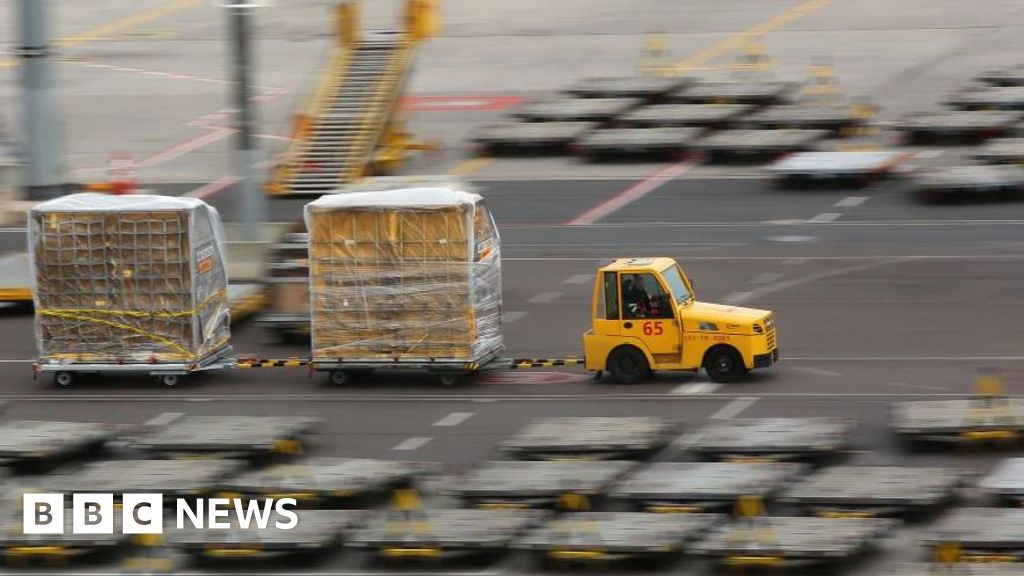 Getty Images
Getty ImagesA series of parcel fires targeting courier companies in Poland, Germany and the UK were dry runs aimed at sabotaging flights to the US and Canada, Polish prosecutors say.
Katarzyna Calow-Jaszewska revealed late last month that four people had been arrested and authorities across Europe were investigating the incidents.
On three days in July, a fire broke out in a container due to be loaded on to a DHL cargo plane in the German city of Leipzig.
A fire broke out at a transport company near Warsaw, and there was a similar fire at Minworth near Birmingham, UK, involving a package described as an incendiary device.
UK officials have given few details about the Minworth fire.
However, Ken McCallum, head of the UK’s domestic intelligence agency MI5, said last month that Russian secret agents had carried out “arson, sabotage and more dangerous actions conducted with increasing recklessness” after the UK had helped Ukraine in Russia’s war.
The head of Germany’s domestic intelligence agency (BfV) has said it was only by a stroke of fortune that the Leipzig device had not ignited in mid-air.
Ms Calow-Jaszewska said in a statement that a group of foreign intelligence saboteurs had been involved in sending parcels containing hidden explosives and dangerous materials via courier companies. The parcels then spontaneously burst into flames or blew up.
Western officials are now thought to have linked the arson attacks to a campaign orchestrated by Russia’s GRU foreign military intelligence service. They believe the fires originated in electric massage machines containing a “magnesium-based” substance.
Magnesium-based fires are hard to put out, especially on board a plane. The incident at Jablonow near Warsaw took two hours to extinguish, according to Polish reports.
“The group’s goal was also to test the transfer channel for such parcels, which were ultimately to be sent to the United States of America and Canada,” the prosecutor said.
Russia denies being behind acts of sabotage.
But it is suspected to have been behind attacks on warehouses and railway networks in EU member states this year, including in Sweden and in the Czech Republic.
German BfV’s head Thomas Haldenwang has described the device that caught fire at DHL’s logistics hub at Leipzig-Halle airport as suspected Russian sabotage.
The package is thought to have arrived from Lithuania and its onward flight was delayed.
The device that caught fire in Minworth is also understood to have come from Lithuania, where the head of the parliament’s national security and defence committee, Arvydas Pocius, said it was part of an ongoing campaign of hybrid attacks aimed at “causing chaos, panic and mistrust”.
DHL has increased security since the recent freight fires. “DHL Express has taken measures in all European countries to protect its network, its employees and facilities, as well as its customers’ shipments,” a spokeswoman said a few weeks ago.
Poland’s government has already responded to Russian sabotage, with Foreign Minister Radoslaw Sikorski announcing the closure of a Russian consulate in Poznan and threatening to expel the Russian ambassador if it fails to bring an end to its attacks.
Russia’s foreign ministry condemned the move as “a hostile step that will be met with a painful response”.











